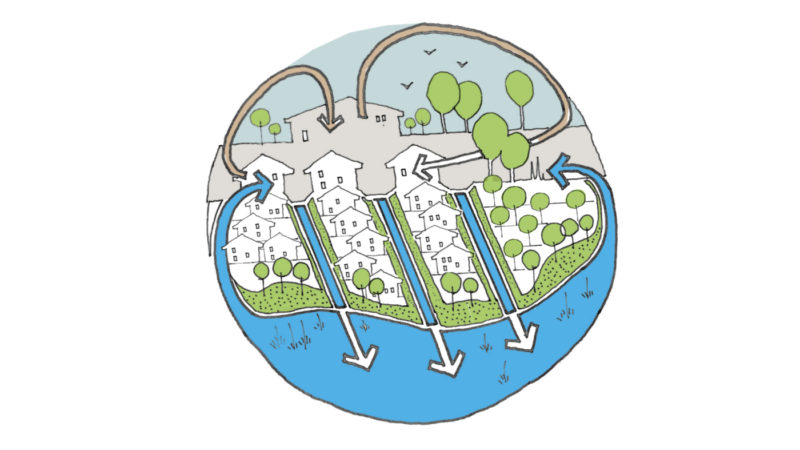When it comes to water, flood prevention is one part of a much bigger picture for landscape architects – and that’s championing water sensitive urban design (WSUD). Landscape architects elsewhere in the world may know WSUD by different monikers, such as low-impact development (LID) or sustainable urban drainage systems (SUDS). Regardless of the name, we at the Landscape Institute believe that attractive, liveable landscapes go hand in hand with smart water management.
While many Land8 members may be most familiar with our commissioned animations like I Want to be a Landscape Architect and Water Sensitive Urban Design, the Landscape Institute is also involved in many other initiatives to encourage people to rethink our relationship with water. As the Royal Chartered Institute for landscape architects with branches throughout the United Kingdom, we champion the profession from grassroots to government.
When floods ravaged parts of the UK earlier this February, the Landscape Institute made front-page news with an open letter to the Prime Minister calling for an integrated approach to water management across the country. First published in the national Daily Telegraph, the letter, which was signed by the heads of 17 leading bodies for the built environment in the UK, was quickly picked up by other big news outlets including the Guardian, Financial Times, and the BBC.
The Landscape Institute’s educational efforts also formed the impetus for our collaboration with the Mayor of London’s Office on a recent ideas competition to transform former docks in the southeast of the city. Our 20 shortlisted designs caught the attention of the trade press with ideas encompassing wetlands, rain gardens, floating villages, a new park that would eliminate any need for mains water supply, and even plans to reroute the River Thames so as to leave the old riverbed ripe for transformation into a green space bigger than Hyde Park.
 In addition to WSUD, a key part of any ‘liveable’ landscape is also one that promotes good quality of life. Public health is a central consideration within that and key legislative shifts in England last year prompted us to investigate landscape architecture’s role in creating healthy places. For a quick summary, our President Sue Illman covers the highlights in this recent Op-Ed for the Guardian. At the heart of the report are the Landscape Institute’s ‘Five Principles of Healthy Places’, as well as profiles of 22 UK projects where public health as been a key design driver.
In addition to WSUD, a key part of any ‘liveable’ landscape is also one that promotes good quality of life. Public health is a central consideration within that and key legislative shifts in England last year prompted us to investigate landscape architecture’s role in creating healthy places. For a quick summary, our President Sue Illman covers the highlights in this recent Op-Ed for the Guardian. At the heart of the report are the Landscape Institute’s ‘Five Principles of Healthy Places’, as well as profiles of 22 UK projects where public health as been a key design driver.
(Related Story: Getting Lost in London: Eastern Curve Garden)
One such project is a thriving community garden in east London developed on a small derelict piece of railway land. The Dalston Eastern Curve is the first of our video case studies produced to accompany the report, and you can watch it below:
Keep in touch with our work by following us on twitter and visit our website.
We are always happy to discuss any aspect of landscape architecture, so please get in touch.
Published in Blog









![Workaround [Video]](https://land8.com/wp-content/uploads/2018/03/richard-jones-land8x8-224x150.png)

